DJI Open 2
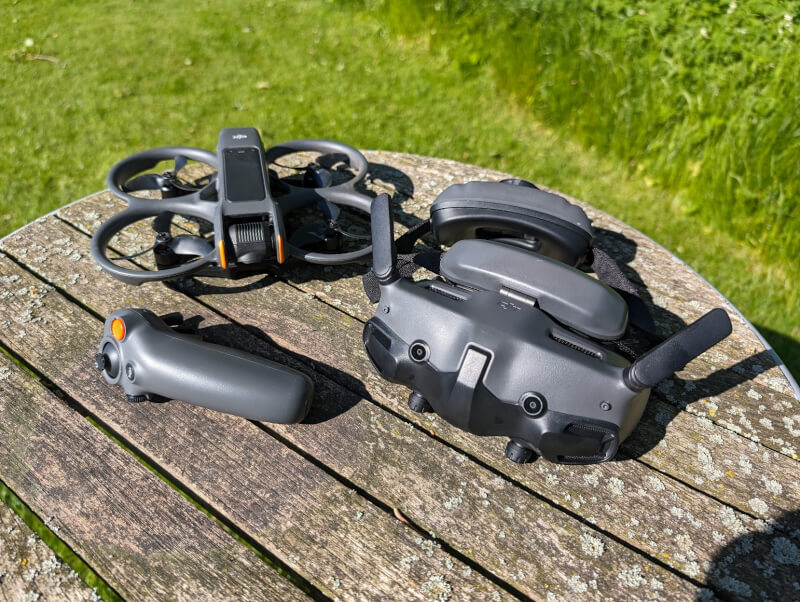
Central features
- 1/1.3-inch Image Sensor
- Crisp 4K/60fps HDR video
- Built-in Propeller Guard
- D-Cinelike Color Mode
- Max Flight Time: 23 mins
- 46 GB Internal Storage
DJI Avata 2 is available in a few different configurations and it is important to pay attention to getting the right one depending on which user you are. The regular standard version does not include, for example, the DJI Goggles 3 which are included in our test here and are quite central to being able to fly with the device.
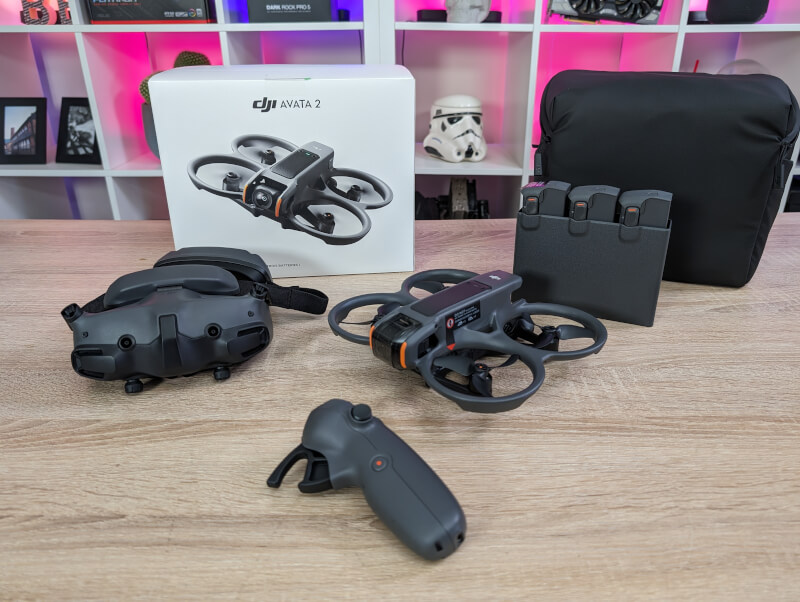
The version that we have visited for testing is a DJI Avata 2 Fly More Combo with three batteries. As said, that version also includes DJI Goggles 3.
A tour around DJA Avata 2
The design of the Avata 2 is somewhat different from the "normal" DJI drones we have seen previously. It is not foldable and instead has four propellers in a fixed mount with built-in propeller guards.
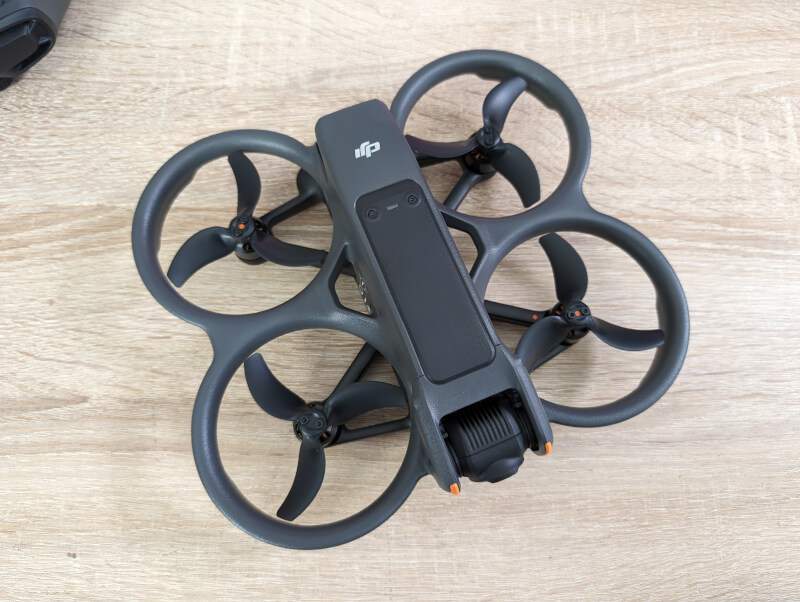
The way you fly an FPV (First Person View) drone means that there may be a greater risk of flying into obstacles, and therefore the protected propellers are a very good choice.
The battery, which provides up to 23 minutes of flight time, is placed at the back of the drone and can be quickly replaced if you have more.
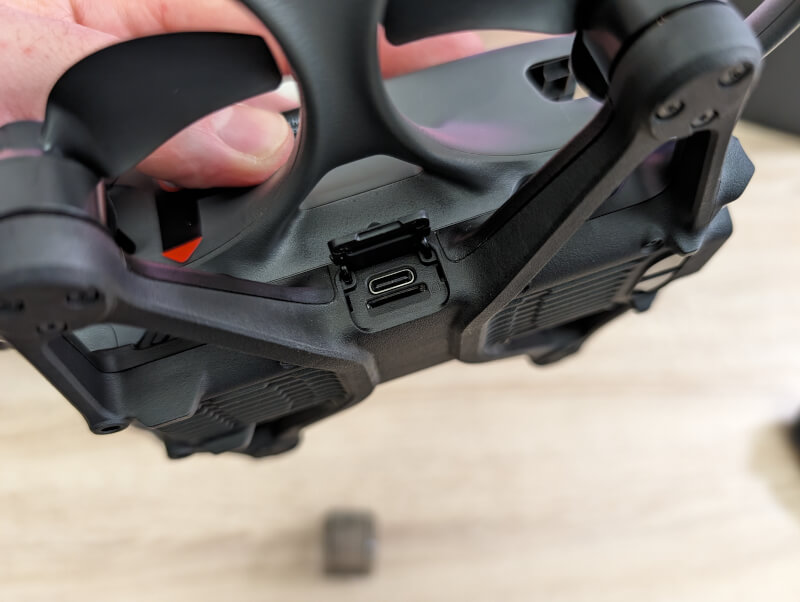
On the side of the drone there is a small rubber cover that covers the space for a Micro SD card that can supplement the 46 GB of storage that is built into the drone. Here we also find a USB C connector for charging or file transfer.
At the back of the drone there are two video sensors, which are supplemented by two other sensors at the bottom of the drone.
In the front we find the camera on the drone. Unlike many other DJI drones, the camera here is only mounted in a two axis gimbal. That is, you can only tilt the camera up and down. The rest must be handled via the drone's movements.
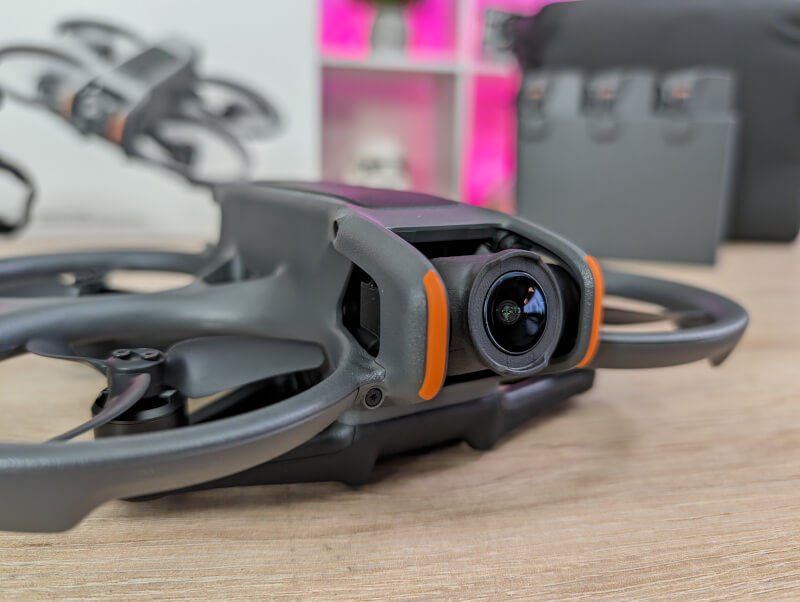
The camera on the DJI Avata 2 comes with a 1/1.3" sensor and has the option of recording up to 4K at 60 FPS with a field of view of 155°
An important detail about the DJI Avata 2 drone is that, overall, with battery, it lands with a weight of over 380 grams. This means that it does not stay under the magical 250 grams, which puts quite a few legal restrictions, which I will get into later.
If we shift the focus to the controller, it is also quite different. This is a DJI RX Motion 3 controller. As the name suggests, a large part of the control of the Avata 2 drone takes place via motion sensors in the controller. So you just have to turn and tilt your hand, and then the drone flies based on that.
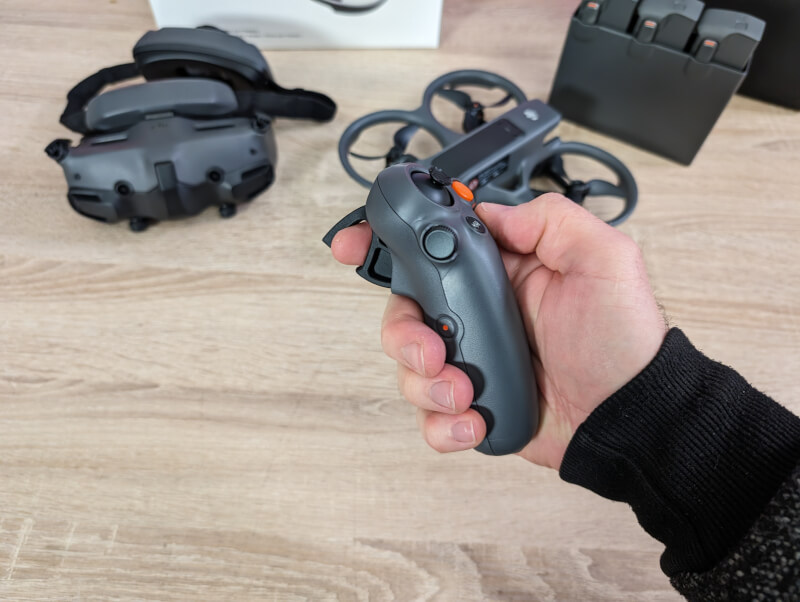
A trigger button on the front controls the speed of the drone, while the other buttons control things like settings and recording.
Finally, we come to the headset that you use to get the FPV experience. It is in the set here DJI Goggles 3, which is included in the package. It looks a bit like VR/AR glasses and through them you get a live video feed from the drone and use it to fly.
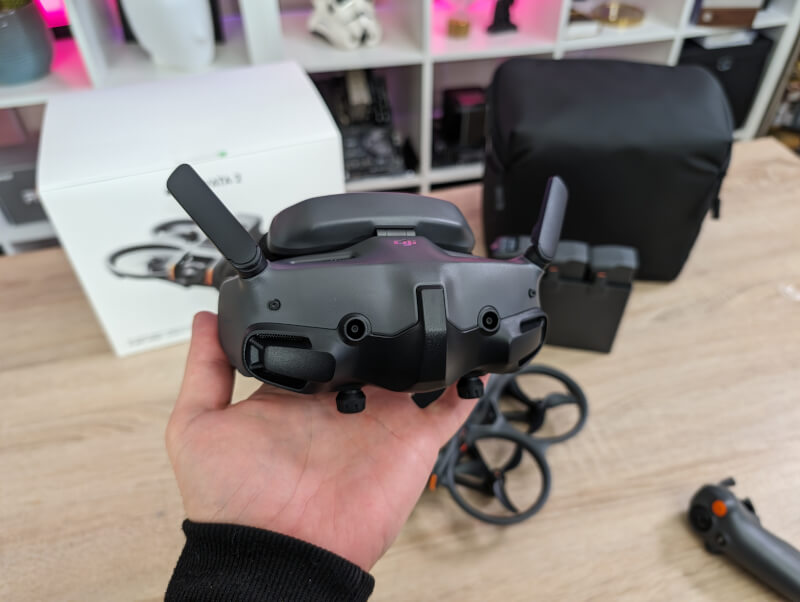
There are two cameras mounted on the front, so it is possible to switch over and see the surroundings without having to take off the glasses.
DJI Goggles 3 sits so close to your face that it is not possible to use it with glasses. However, DJI has taken that part into account and there are built-in adjustable lenses that can be adjusted, so that even half-blind people like me can see something without the need for my glasses.
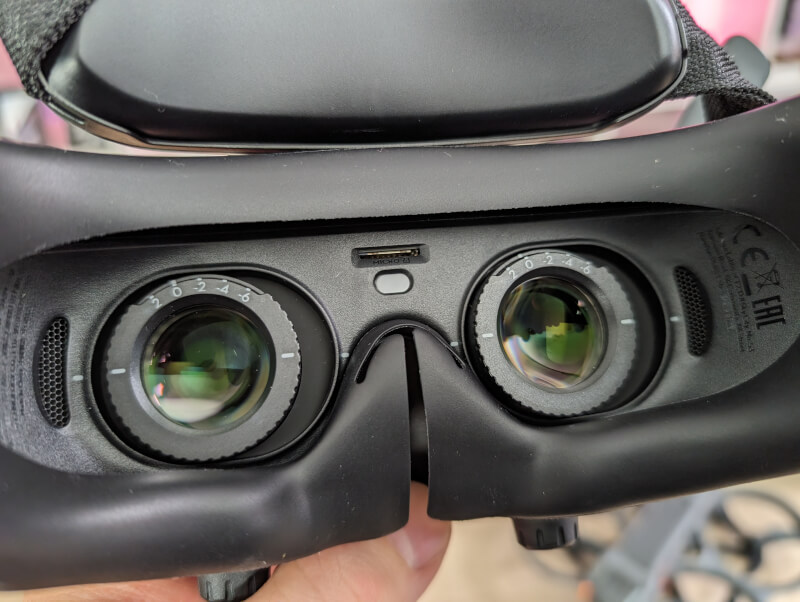
The set that is installed by default goes from +2 to -6, and if you do not land in that spectrum, there is also an alternative set that goes from 0 to -8.
In addition to that, the lenses in DJI Goggles 3 can also be adjusted so that they fit the distance between your eyes. All of these features mean that the set should be usable by most people.
A little about Danish/EU legislation
I won't go into too much depth with the law here, but just take the time to mention it. There are a number of rules in the area, and in the worst case scenario you can be punished if you end up violating the rules for drone flying, whether it is consciously or unconsciously.
Since the DJI Avata 2 weighs over 250 grams, there are quite a few more restrictions on it compared to the drones we have previously reviewed.
In order to be allowed to fly with it, you must have passed the theoretical A1/A3 test and thus have a drone certificate, which of course must also be brought with you when you fly the drone. However, it can all be done digitally and is overall not super difficult to get through.
Another important detail is that you must have liability insurance that covers flying with drones in this category. It is an insurance that must be able to cover an insurance sum of up to DKK 7 million, which is not exactly a small thing.
There are also quite a few more restrictions on where you can fly compared to the smaller drones under 250 grams.
With the heavy drones in this class, you must keep a significantly greater safety distance and you must not fly in an area where there are unauthorized persons. This means that all flights in urban areas will in most cases be excluded or at least very limited without special permission.
You can get slightly less restrictions by taking the more comprehensive A2 Drone certificate. It does, however, require that you pass a theoretical test with an examiner approved by the Danish Transport Agency.
There is also practical self-learning, where you have to familiarize yourself with the drone you want to fly with, and a series of practical maneuvers you have to go through. Here there is no test you have to pass, but it is subject to control and the possibility of being selected for control, cf. below from the Danish Transport Agency:
"The practical self-training involves some specific maneuvers that must be carried out before you can declare that you have completed the practical self-training. The self-training is subject to supervision, and you will be able to be selected for control if the Swedish Transport Agency deems it necessary. If we find it unlikely that you have carried out your practical self-training, we will deprive the remote pilot of his certificate of competence. "
These more comprehensive rules mean that there are very naturally quite a few more restrictions on how and not least where you can use a drone like the DJI Air 3. These are details that you have to take into consideration before you take the plunge. in acquiring and flying the drone.
In addition to the above rules, you must of course still be aware of the areas where there may be restrictions on flying, even if they immediately meet the other rules about distance etc.
You can find much more about the rules and the different types of certificates on the Swedish Transport Agency's website www.droneregler.dk
It pays to spend some time familiarizing yourself with the rules for drone flying. It is not exactly an easy web of rules to sift through. Through other work, I am used to reading legal texts and finding my way around public notices, and it took me a while to make sense of things. So if you want to be on the safe side, you should set aside some time for legal research.
The drone regulations are basically common European and apply throughout the EU. However, there may be additional rules in certain countries, so be aware. Outside the EU, there may also be special rules that you must be aware of.
Testing
I've been testing the DJI Avata 2 over a few weeks. Due to the legal restrictions with a drone over 250 grams, I have naturally been quite limited and for this reason have only been able to test the drone on the grounds around my house, so I have been completely away from outsiders.
I have now flown quite a bit with other drones from DJI, and in this connection it is now a familiar experience to control the drones via a normal two stick controller with a screen.
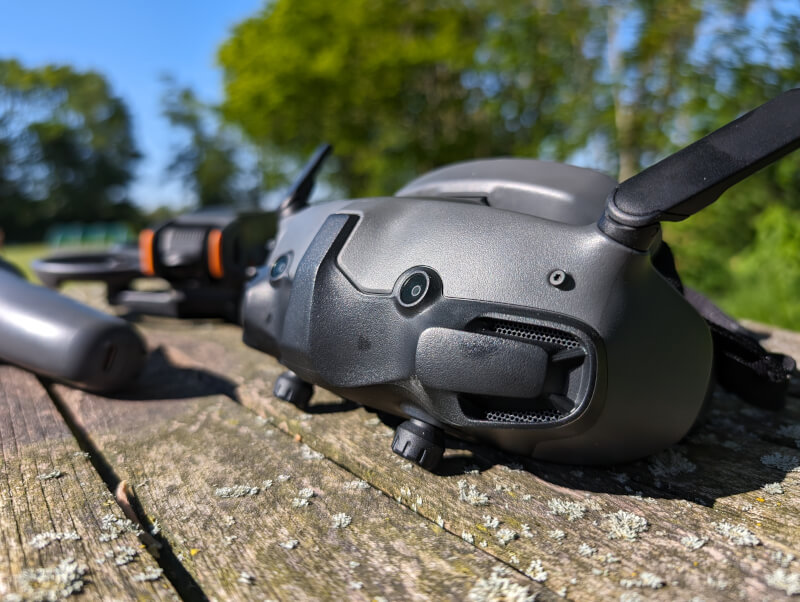
Here the experience was very different with DJI Avata 2, as the entire interface is available through the DJI Goggles 3 set. So it just required quite a bit of getting used to and rooting back and forth to find head and tail in things.
It's not quite as intuitive as the normal DJI interface, but the learning curve wasn't too hard and after a little over an hour of trying I was well in place.
By default, the DJI Avata 2 is set in a Beginner Mode when you receive it, and that seems like a very good idea. Because even if you are used to other drones, the experience is very different with an FPV drone, like this one.
As I touched on earlier, but control the drone with a DJI RX Motion 3 controller and here it is how you tilt and turn your hand, which controls the drone. A bit like you might know it from a Nintendo Wii controller.
In the field of vision in the glasses, you have a small aiming grain in the middle of the field and it is this that you can use as a guide for what the drone is flying after. When you rotate the hand with the controller to the right or left, the drone turns and tilting the hand up and down increases or decreases the drone's flight height.
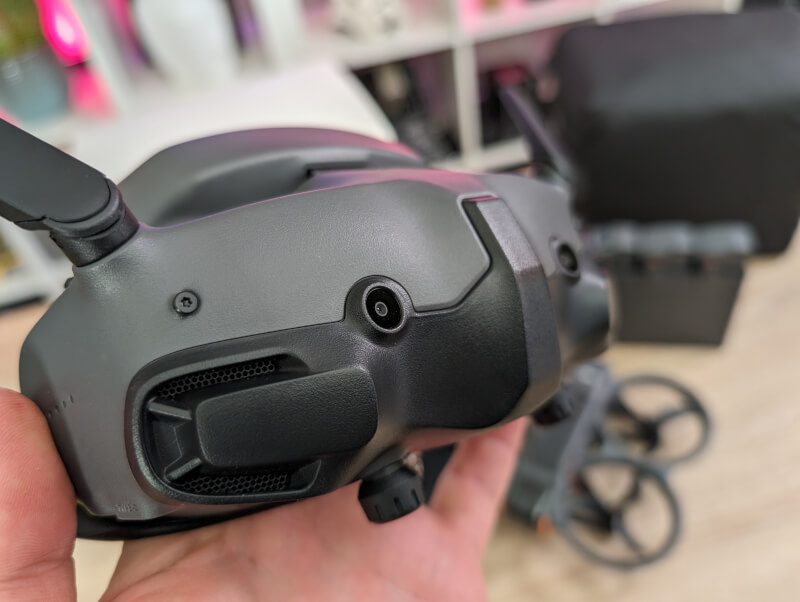
It's a way of steering that takes a bit of getting used to, but which I think was very accessible once you had just tried it out a bit and learned the new steering.
One thing to be aware of, however, is that you should probably take the first few flights in smaller chunks if you tend to get motion sickness. Just as you can experience it with VR, the experience of flying an FPV drone may well give you a little nausea.
I experienced it myself the first few times, but I eventually got used to the experience so it wasn't a problem later on.
When you jump away from the beginner setting, the Avata 2 drone can gain quite a lot of speed. It is super manoeuvrable and it is possible to do some pretty fun maneuvers after you have practiced a bit.
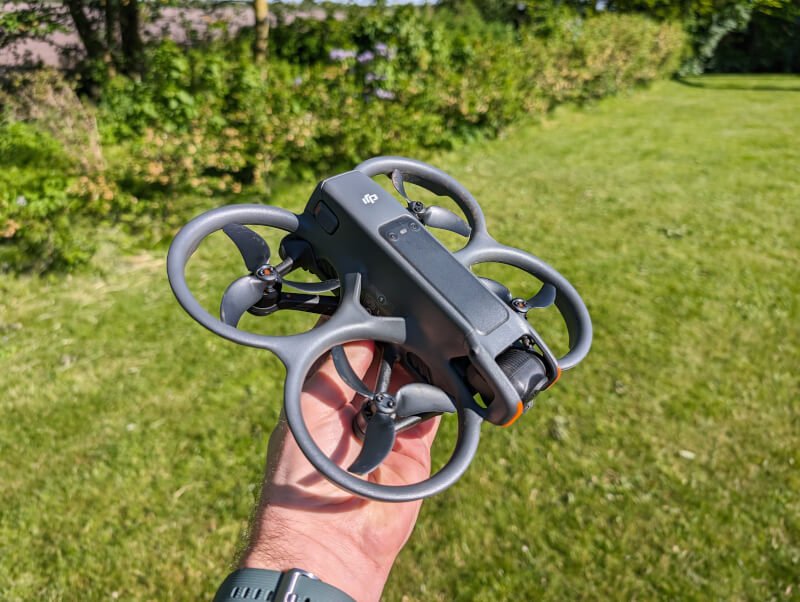
However, it takes a bit of getting used to to get a handle on the maneuvering and get a feel for how big the drone is, where it can squeeze through and how quickly it can turn or rise/fall in connection with obstacles on the road.
This is where the built-in propeller protectors are a good feature, because if you challenge yourself a bit, it's quite easy to bump into obstacles. I myself was on the ground with the Avata 2 drone a few times during my testing when I misjudged the distance to trees or other objects during my flights. Fortunately, however, it was nothing that went beyond the drone, which is well built.
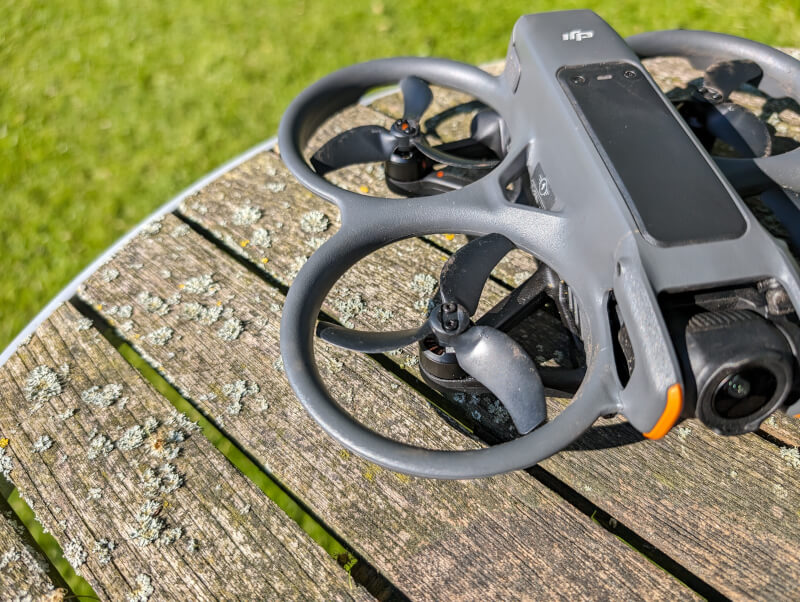
The video quality of the recordings from the DJI Avata 2 is solid but cannot quite compare to the sharp quality that I have experienced from other DJI drones. However, this is probably not where DJI has spent most of their development budget either.
Price
DJI drones are typically not a cheap hobby and this is certainly also the case with the Avata 2, which in the Fly More Combo that we have had for testing, lands with a price of just over 1300$.
The price is probably very good if we take into account how advanced the technology is in the drone. However, it is still a lot of money for a drone, which you will also be quite limited with according to current legislation.
Conclusion
It has been a fun experience to have DJI Avata 2 visiting. The experience of an FPV drone, where you get the feeling of sitting at the head of the drone and flying away, is quite different from a regular drone.
However, this also means that many of the recordings that you want to make with a "normal" drone, e.g. when you are away on holiday etc., are not exactly right with a drone like the Avata 2.
So it must be if you specifically want the slightly special style that you get from your FPV recordings. It is not quite the same as an all round drone, such as a DJI Air 3 or similar drone.
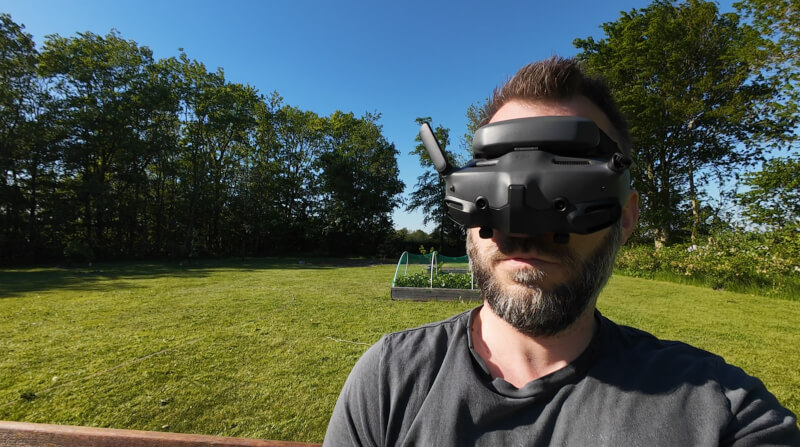
If you add on top of that the high price and the limitations that come with a drone over 250 grams, I find it difficult to give the DJI Avata 2 an unreserved recommendation. There are simply too many conditions that can end up limiting the use of the drone.
If you can see around those limitations, or have usage scenarios in mind where the restrictions are not an obstacle, then with the DJO Avata 2 you get a technically advanced drone with plenty of options. Despite the slightly special style, it is quite accessible and, not least, damn fun to use.
We end up with a final grade of 9, naturally subject to the limitations I have discussed above.
Advantage:
- Relatively easily available FPV drone
- Solid hardware with impressive technical specifications
- Good pictures and video
Disadvantages
- Weighs over 250 grams with all the legal restrictions this entails.
- The price

Latest gadgets
-
19 Sepgadgets
-
23 Maygadgets
LaserPecker LP5 Laser Engraver
-
01 Maygadgets
Swytch launches Swytch Max+ Kit
-
10 Margadgets
DJI AIR 3S
-
03 Margadgets
Razer Wolverine V3 Pro
-
21 Febgadgets
OBSBOT Tiny 2 SE
-
13 Febgadgets
Corsair launches Platform:4
-
17 Jangadgets
Nerdytek Cycon3
Most read gadgets
Latest gadgets
-
19 Sepgadgets
DJI launches Mini 5 Pro
-
23 Maygadgets
LaserPecker LP5 Laser Engraver
-
01 Maygadgets
Swytch launches Swytch Max+ Kit
-
10 Margadgets
DJI AIR 3S
-
03 Margadgets
Razer Wolverine V3 Pro
-
21 Febgadgets
OBSBOT Tiny 2 SE
-
13 Febgadgets
Corsair launches Platform:4
-
17 Jangadgets
Nerdytek Cycon3






